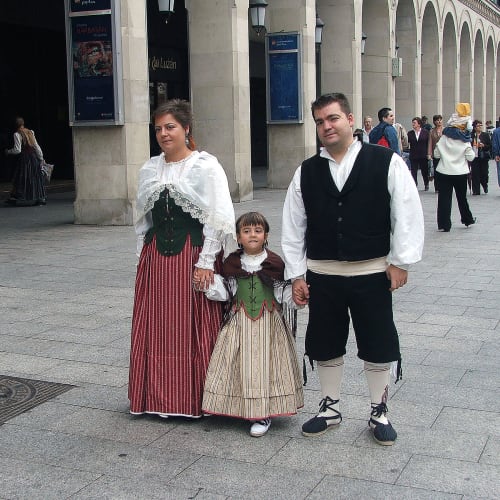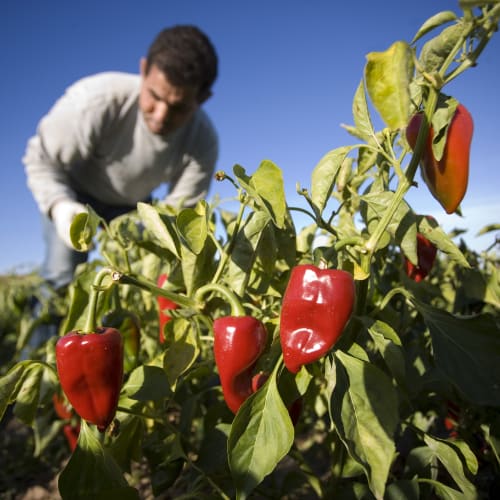Neither Friars Nor Conquistadores
Don Harris | October 2014




Dr. James Fernández, a professor at New York University, and his colleague and friend Luís Argeo have devoted much of their professional lives to chronicling the lives of overlooked Spanish emigrants - most likely some of whom are parents or grandparents of the La Tienda family!
They have been traveling all over the U.S. and Spain, conducting research in libraries and archives, visiting cemeteries, interviewing descendants of immigrants, and, whenever possible, scanning family archives. I have asked Jim Fernández to tell us about these 'invisible immigrants' and about his lifetime work:
It is a real honor to be able to address the readers of Don Harris’s admirable Reflections at latienda.com, and to share with you some of the research I have been conducting about Spanish immigrants in the US.
“Spaniards in the US” for most people in this country, these words will probably conjure up images of the explorers, friars and conquistadores who, in the sixteenth, seventeenth and eighteenth centuries, explored, conquered and settled large swaths of territory, from Florida to northern California; lands that would eventually form part of the United States. Spanish heritage in the US, when considered at all, is often thought about exclusively in terms of a handful of figures we might have learned about in our grade school history classes: Juan Ponce de León, Francisco Vásquez de Coronado, or Junipero Serra, for example.
Very few people in the United States know that tens of thousands of Spaniards came to this country as immigrants in the last decades of the nineteenth century and the first decades of the twentieth. These Spaniards were part and parcel of the vast diaspora of Europeans who crossed the Atlantic in those same years in search of opportunity. In fact, in the fifty years between 1880 and 1930, more Spaniards came to the Americas – North, Central and South – than in the entire previous period of almost four centuries, from Columbus’s first voyage in 1492 until 1880.
Naturally enough, the vast majority of those roughly four million Spaniards emigrated to points in Spanish-speaking America – Buenos Aires alone received about 2 million of them! But a significant number of Spaniards would end up in the United States as well, many having re-emigrated to this country after stints in Spanish-speaking America, others coming directly from Spain, in some cases having been recruited by agents representing specific trades or industries.
When compared to other national groups – Irish, Germans, Italians or Poles, for example — the Spaniards were just a drop in the vast bucket of US immigration. And like many members of those other larger groups, the Spaniards and their descendants were pretty much assimilated into mainstream US culture in a generation or two. And their stories might have been lost to us forever, had it not been for a most unfortunate event that occurred just before that assimilation began in earnest.
The outbreak of the Spanish Civil War in July of 1936 galvanized the Spanish emigrant community in the United States. This galvanization took place on two levels: within each of the small Spanish enclaves that were spread all over the country, the immigrants bonded ever more closely together in solidarity and mobilized to support the legitimately elected government of Spain; and, at the same time, a nation-wide federation of Spanish clubs and societies was established – the Sociedades Hispanas Confederadas [SHC] — aimed at coordinating on a national level the fundraising efforts of the local associations.
The war brought a certain amount of notoriety to these somewhat invisible immigrants. The lists of local Spanish organizations published by the SHC during the war allow us to reconstruct an extensive archipelago of Spanish enclaves scatter shot across the US map from coast to coast in the mid 1930′s. Some of these communities are better known and more studied than others. There is an abundant bibliography, for example, about Spanish cigar workers in Tampa, Florida, or the Basque sheepherders and inn-keepers of the Western states (eg. California, Idaho, Nevada).
Other enclaves, though no less interesting, are much less known and studied: the thousands of stone cutters who were brought from Cantabria to work in the stone sheds and granite quarries of Vermont, for example; or the miners and workers who were recruited from both Andalucía and Asturias to work in the coal fields and zinc plants of West Virginia, Pennsylvania and Kansas; or the roughly eight thousand Spaniards – many Andalusians among them — who, between 1907 and 1912, accepted jobs on the sugar-cane plantations of the Hawaiian Islands. Many of those sugar-workers re-emigrated from Hawaii to California, and, by the time the war breaks out in Spain, we will find their immigrant associations organizing fundraising dances and picnics in places like Hollister, Monterey, Vacaville, Winters, and Rocklin.
As is the case with all immigrants, the “foodways” of Spaniards in the United States are extremely interesting. Food and cuisine are crucial components of the cultural identity of all immigrant groups, and it turns out that the negotiation between adapting to the ingredients that are available in your adopted country (there was, alas, no “tienda.com” in 1920!) and preserving a recognizable and transmittable culinary tradition, is often front and center in the tales told by Spanish immigrants and their descendants throughout the United States.
Let’s listen in to a couple of these tales from California.
Gloria López - Winters, California
My grandfather, Rafael Ramos Lopez, came from Lubrin [Almería] to Providence, RI in May of 1920 with my grandmother, Filomena Invernon Lopez (from Pilar). From there, they quickly made their way to Winters to join relatives. He brought with him pepper seeds. Every year he planted his peppers and saved the seed for the next year. As he aged, my father took over the responsibility of planting the peppers and saving the seed, year after year. As he aged, my brothers and I have kept up the role of “keeper of the seeds.” I plant about 400 seeds every year around the first of February. By the end of April, the plants are ready to put in the ground. This year I planted about 75 plants for my own consumption, eating them fresh or roasted and peeled and freezing the excess. All of the rest of the plants, I gave away. I posted on Facebook that I had the Spanish pepper plants to give away and I had a tremendous response from Spanish descendants that were elated to find the same peppers that they remembered their parents and grandparents growing. I already have my seeds drying for next year. During the season, you let some of the “perfect” peppers that are long, straight, and plump mature on the plant until they are red. Then, pick, cut away the flesh, and let the seeds dry. Put the seeds away until next year…and the cycle continues and memories remain alive.
Dan Albert - Monterey, California
Dan’s parents were born in the province of Alicante, Spain. They were just children when their families were recruited to work on the sugar-cane plantations of the Hawaiian Islands. Like many of the roughly 8,000 Spaniards who left for Hawaii between the years 1907 and 1912, Dan’s grandparents re-emigrated to California in the teens, and that is where his parents met. They married in San Francisco and settled in Monterey to raise a family.
After working for almost thirty years as coach of the Monterey High School football team, Dan served for twenty years (1986-2006) as Mayor of the city of Monterey, which had been the capital of California under Spanish, Mexican and US rule. One of the highlights of his two decades as Mayor was hosting the King of Spain, who visited Monterey and Carmel in 1987; co-hosting the visit of Don Juan Carlos was the then-mayor of the neighboring town, Mr. Clint Eastwood of Carmel.
Dan remembers with particular relish the meeting he was able to orchestrate between the King and his mother. Caridad was born into extreme poverty in a town called Casas del Señor; in Monterey she worked as a maid in the Delmonte Hotel during the summers, and in the San Xavier fish cannery in the winters. When Dan tells the story of arranging the meeting, one gets the sense that he wanted to give the King the pleasure of meeting a woman as extraordinary as his mother.
Professor Fernandez is currently collaborating with the Spanish writer and filmmaker, Luís Argeo, to produce Invisible Immigrants, a deluxe book of photographs that will document, celebrate and honor the lives of tens of thousands of Spanish immigrants who came to the U.S. in the late nineteenth and early twentieth centuries. Nearly all the photographs in the book have been shared with them by families or individuals. If you would like to learn more about the book, search online for INVISIBLE IMMIGRANTS. If you have family stories to share, I am sure Jim would enjoy hearing from you: James D. Fernández, New York University - jf2@nyu.com.edu.

